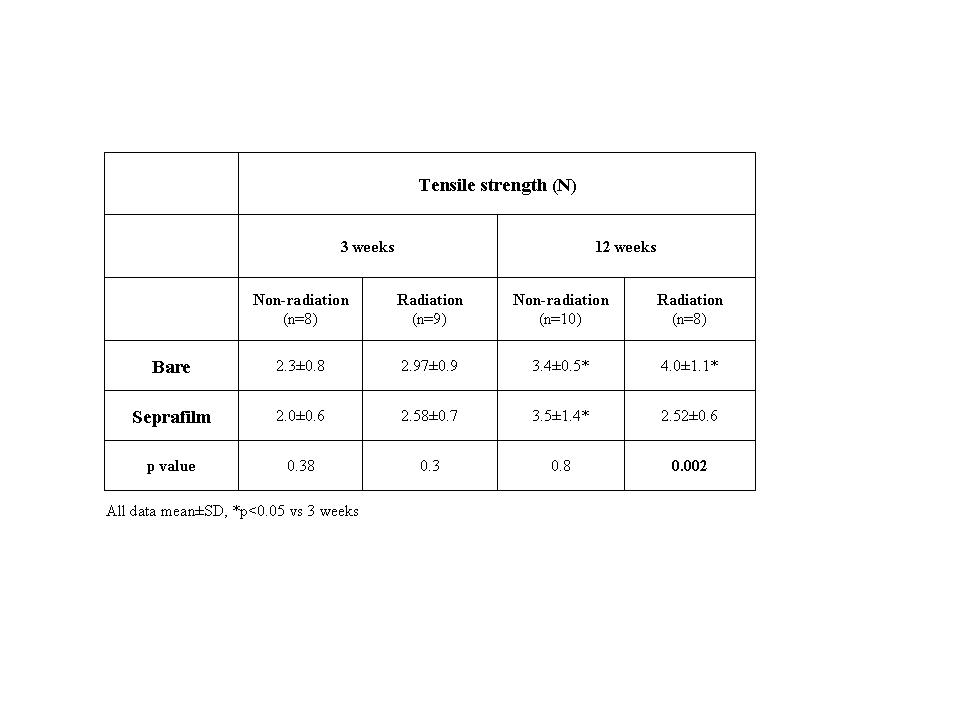Thursday, March 23, 2006
9868
The Effect of Seprafilm Envelopes on Peri-Prosthetic Capsule Formation in the Rat Radiated Implant Model
Purpose: Peri-prosthetic capsular fibrosis particularly in an irradiated breast is a vexing phenomenon in reconstructive breast surgery. Seprafilm has been used to reduce adhesion formation in radiated fields, however, its role as a peri-prosthetic barrier has not been investigated. Methods: Seventy 5ml saline implants were placed in 35 Spraque-Dawley rats. Prior to implantation, the right prosthesis was wrapped in a sheet of Seprafilm (Seprafilm subgroup) while the left implant served as paired control (Bare subgroup). Seventeen animals underwent radiation treatment with 21.5 Gy delivered tangentially to bilateral implants 2 days after the procedure (Radiation group) while the remaining rats formed the Non-radiation group. Animals from both groups were sacrificed at 3 (Non-radiation n=8, Radiation n=9) and 12 weeks (Non-radiation n=10, Radiation n=8). Peri-prosthetic capsules were harvested and submitted for tensiometry and histological measurement of total capsular thickness.
Results: See table below. Total capsular thickness did not differ between the groups.
Conclusions: The tensile strength of peri-prosthetic capsules increased overtime irrespective of radiation. At twelve weeks, Seprafilm reduced the tensile strength of a radiated peri-prosthetic capsules without affecting capsular thickness. Reduction in tensile strength may be a reflection of diminished collagen deposition which in turn could attenuate post-radiation capsular contracture.

